
Cuisine
Bukharan Jewish cuisine
Bukharan Jewish cuisine is a fusion of Jewish and Central Asian cuisines. It is characterized by its use of lamb, beef, and chicken, as well as spices like cumin, coriander, and turmeric. Bukharan Jewish cuisine also features a variety of breads, including lepeshka and samarkand. Dairy products like yogurt and sour cream are also commonly used in dishes like shurpa and lagman.
Typical ingredients
Lamb, Beef, Chicken, Rice, Noodles, Potatoes, Carrots, Onions, Garlic, Cumin, Coriander, Turmeric, Yogurt, Sour cream, Tomatoes, Peppers, Eggplant, Chickpeas
Presentation and garnishing
Bukharan Jewish dishes are often presented in large communal platters, with the meat and vegetables arranged in a decorative pattern. Garnishes like fresh herbs and pomegranate seeds are also commonly used.
Bukharan Jewish cuisine has been influenced by a variety of cultures, including Persian, Russian, and Uzbek.
More cuisines from this region...
Kazakh cuisine, Uzbek cuisine, Kyrgyz cuisine, Tajik cuisine, Turkmen cuisine
History
Bukharan Jewish cuisine has a long history that dates back to the 5th century BCE. The Bukharan Jews were a community of Jews who lived in Central Asia, and their cuisine was heavily influenced by the local culture. The nomadic lifestyle of the people also played a role in shaping the cuisine, as it required dishes that were hearty and could be easily transported.
Cultural significance
Bukharan Jewish cuisine is an important part of the Bukharan Jewish community's cultural heritage. It is often served at weddings, festivals, and other special occasions. The cuisine is also an important part of the nomadic lifestyle, as it provides sustenance for those who travel long distances.
Health benefits and considerations
Bukharan Jewish cuisine is generally high in protein and carbohydrates, but can also be high in fat. Some dishes may also be high in sodium.
Bukharan Jewish cuisine recipes Browse all »
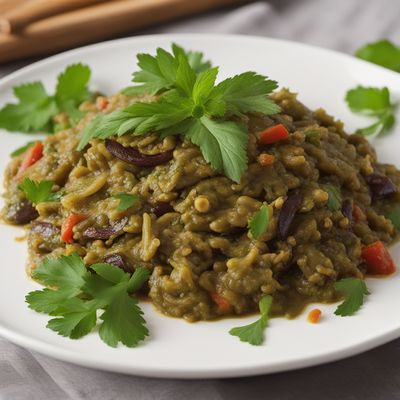
Bukharan Jewish-style Eggplant Salad
Savory Delight: Bukharan Jewish Eggplant Salad

Bukharan Jewish Style Chicken Schnitzel
Golden Crispy Chicken Schnitzel with a Bukharan Twist
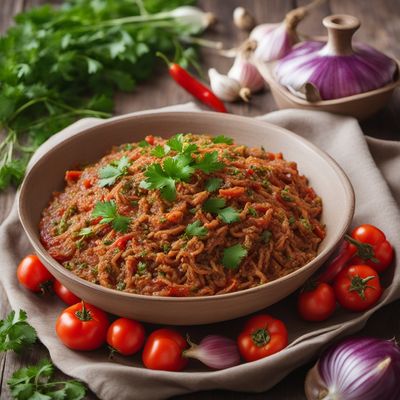
Bukharan Jewish Matbucha
Spicy Tomato and Pepper Delight: Bukharan Jewish Matbucha
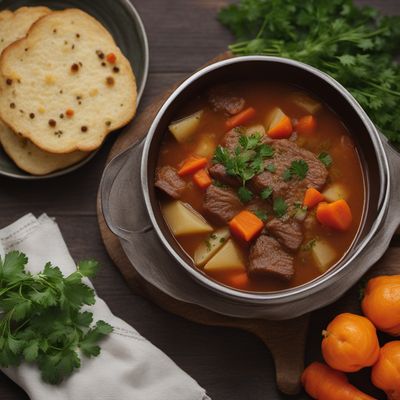
Bukharan Jewish Toyga Soup
Savory Delight: Bukharan Jewish Toyga Soup
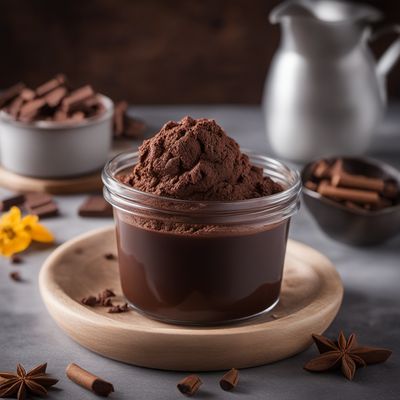
Bukharan Jewish Chocolate Gelato
Silky Delight: Bukharan Jewish Chocolate Gelato

Stuffed Peppers Bukharan Style
Savory Delight: Bukharan Stuffed Peppers

Bukharan Jewish Chicken Canapés
Savory Delights: Bukharan Jewish Chicken Canapés

Bukharan Jewish-Inspired Pork Tenderloin Sandwich
Savory Bukharan Pork Delight

Bukharan Jewish Kogel Mogel
Silky Sweet Delight: Bukharan Jewish Kogel Mogel
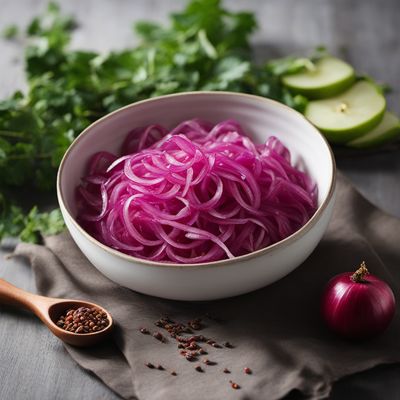
Bukharan Jewish-style Pickled Onions
Tangy and Spicy Pickled Onions Bukharan-Style
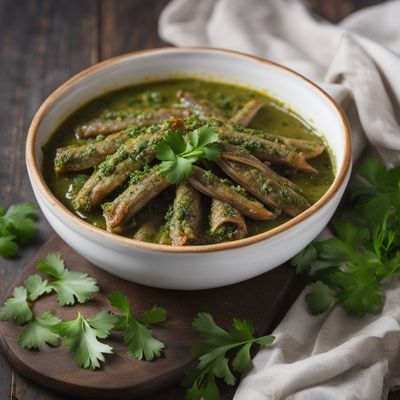
Bukharan Jewish Style Stuffed Anchovies
Savory Delights: Bukharan Jewish Stuffed Anchovies

Creamy Bukharan Jewish Ham
Silky Delight: Creamy Bukharan Jewish Ham